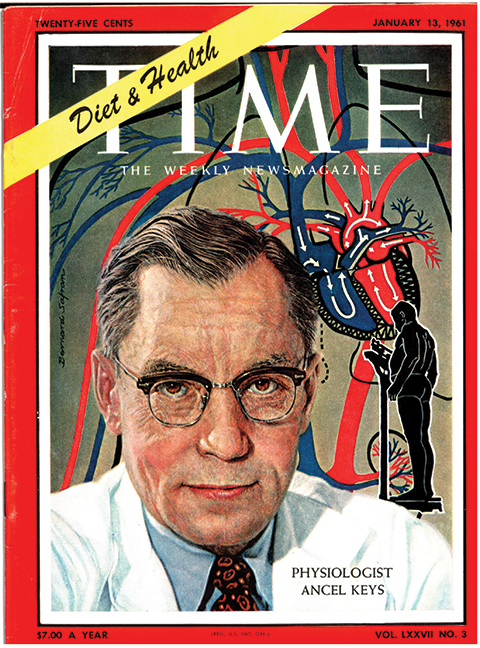Why Fat is Back on MY Menu
Category: Healthy Nutrition

In 1977, when I was in my mid-thirties, a Senate committee led by George McGovern published its landmark “Dietary Goals for the United States,” urging Americans to eat less high-fat red meat, eggs and dairy and replace them with more calories from fruits, vegetables and especially carbohydrates.
Low-Fat was in…and boy did I buy it ~ low fat cookbooks, low fat yogurt, low fat milk, low fat cookies (in 1990’s more than 1,000 reduced or low-fat foods were introduced each year according to the AHA). I was never even thinking about the sugar content ~ and as we know when we eat sugar ~ or refined carbohydrates (which break down into sugar)~the body produces insulin to transport this sugar to the muscles and organs that burn it as fuel. Insulin,though, also regulates fat metabolism, and when insulin levels are high (for example from those “low fat” cookies), the body stores fat rather than burning it. And according to researchers, replacing fats with sugars and carbohydrates has the potential to wreak havoc on our metabolism. Did you know that according to one survey, 2 out of every 3 adults believe “a need exists for food ingredients that can replace the fat in food products?” And I was one of them! AND my weight continued to climb in spite of all those “low-fat” choices! (in the 1960’s and ’70″s roughly 14% of Americans were obese. Today, more than 30% are obese, with another 30% classified as “overweight!”
So what precipitated this “low-fat” craze? According to Wikopedia, it was Ancel Keyes, an American scientist who studied the influence on diet and health. After observing in southern Italy the highest concentration of centenarians in the world, Keys hypothesized that a Mediterranean-style diet low in animal fat protected against heart disease and that a diet high in animal fats led to heart disease. The results of what later became known as the Seven Countries Study appeared to show that serum cholesterol was strongly related to coronary heart disease mortality both at the population and at the individual level. As a result, in 1956 representatives of the American Heart Association appeared on television to inform people that a diet which included large amounts of butter, lard, eggs, and beef would lead to coronary heart disease. This resulted in the American government recommending that people adopt a low-fat diet in order to prevent heart disease.
Keys had concluded that saturated fats as found in milk and meat have adverse effects opposite to the beneficial effects of the unsaturated fats found in vegetable oils. This message was obscured for a 20-year period starting around 1985, when all dietary fats were considered unhealthy. This was driven largely by the hypothesis that all dietary fats cause obesity and cancer. (The Time Magazine, seen above, published his picture in 1961, endorsing these views).
Have we had great results from this? Janet Paskin states in the Ode Magazine, “It has been three decades of being told that fatty foods are deadly, to blame for a full menu of health hazards, from heart disease to obesity to cancer ~ even described as the nutritional equivalent of cigarettes!” She refers to the relentless public-service campaigns and municipal bans aimed at keeping us slender and healthy. (Don’t forget the above statistics about the obesity crisis now present in America!)
The secretary of the Association of Nutritional Medicine and Dietetics in Aachen, Germany, Irina Baumbach, states that the food we now eat more of contains more chemicals, starches and sugar ~ which are more harmful than the much-feared animal fats.
Experts are now seeing the benefits of fat in the diet ~ aside from the beneficial effects some fats can have on cholesterol ~ unsaturated fats, like olive oil, tend to raise levels of good cholesterol and lower levels of the bad stuff ~ and fats help deliver vitamins, build cells and regulate hormones. Jennifer Lovejoy, an obesity researcher at the University of Washington School of Public Health states, “When people are eating whole food, real food diets, obesity is not a problem.” And, of course when we discuss whole foods this certainly eliminates sugary low-fat options and processed foods which contain those carbohydrates that turn into sugar as soon we consume them!
In reading about this subject online I came across an interesting book on the subject in the Washington Monthly, The Big Fat Surprise: Why Butter, Meat, and Cheese Belong in a Healthy Diet, by former Gourmet magazine and National Public Radio reporter Nina Teicholz. Building on journalist Gary Taube’s work, Teicholz (who has also written for this magazine) spent nearly a decade combing through tens of thousands of scientific studies and documents and interviewing scores of key scientists, bureaucrats, and industry insiders, many of them in their eighties and nineties. Her attributions and bibliography alone run 115 pages. This is a fascinating subject and her book, I believe, is well worth reading.
My plan now involves leaving those sugary carbs and “low fat” foods behind, not being afraid of healthy fats, and educating myself with books such as the one I mentioned by Nina Teicholz. What about you? Have you been affected by all the hype of “low fat” foods?



Facebook Comments